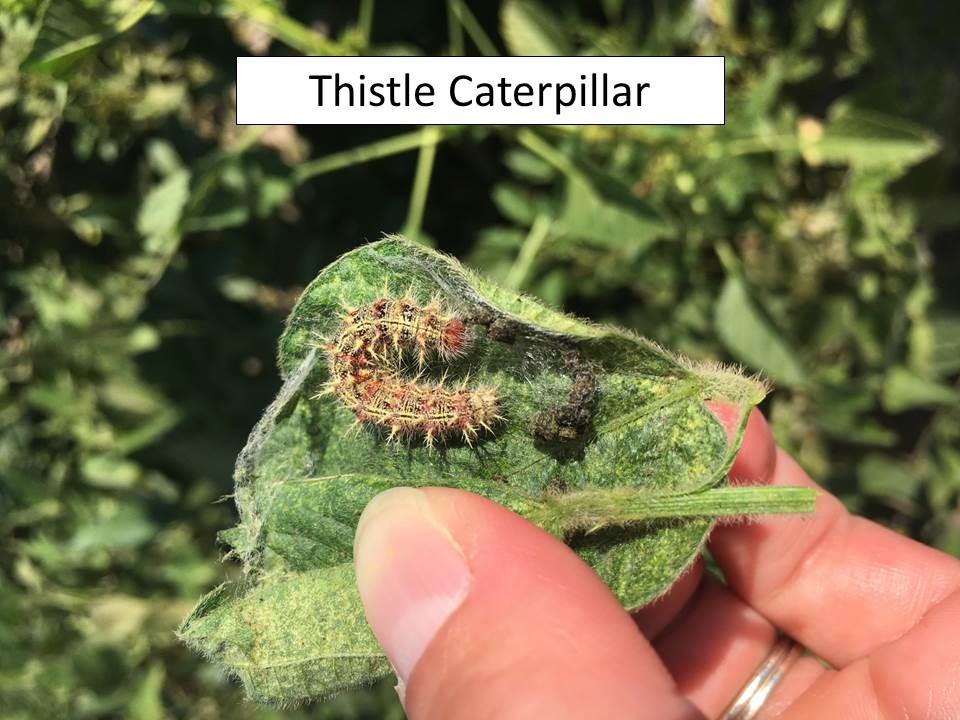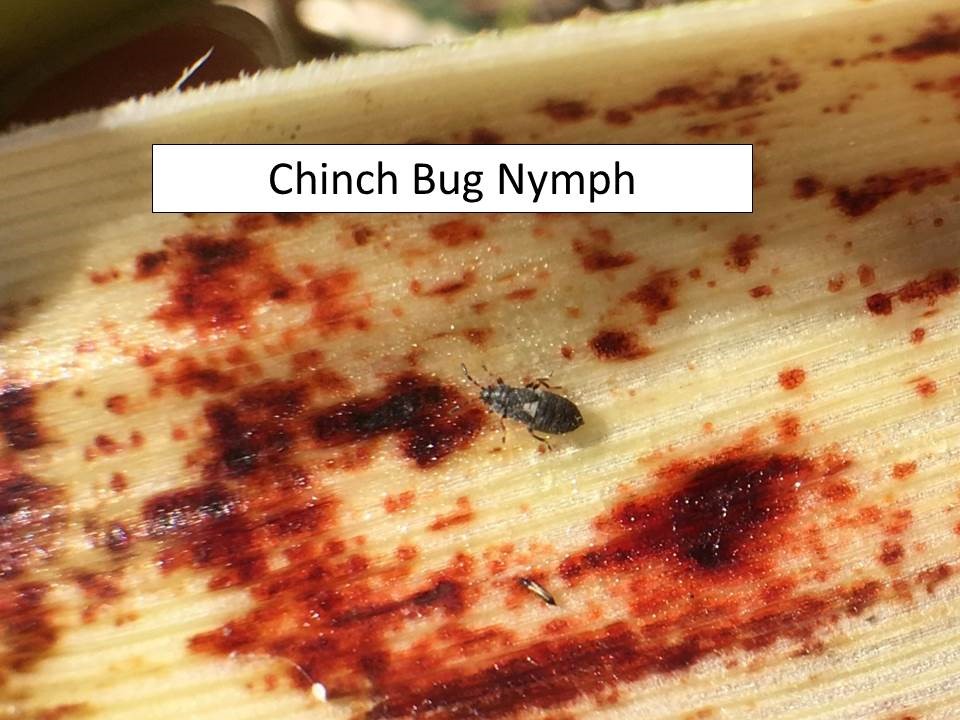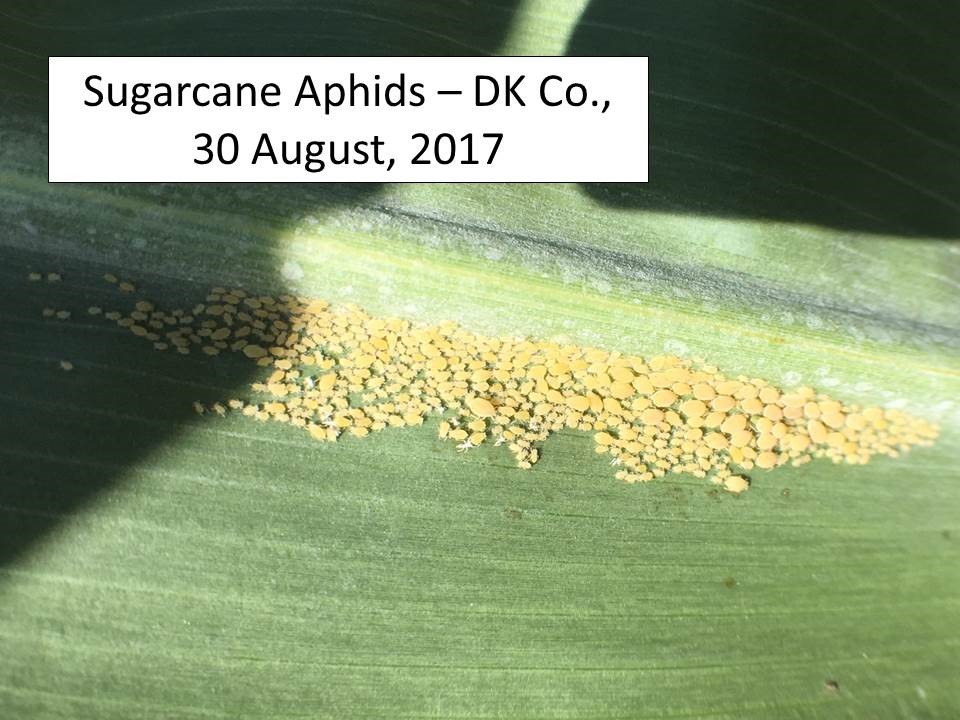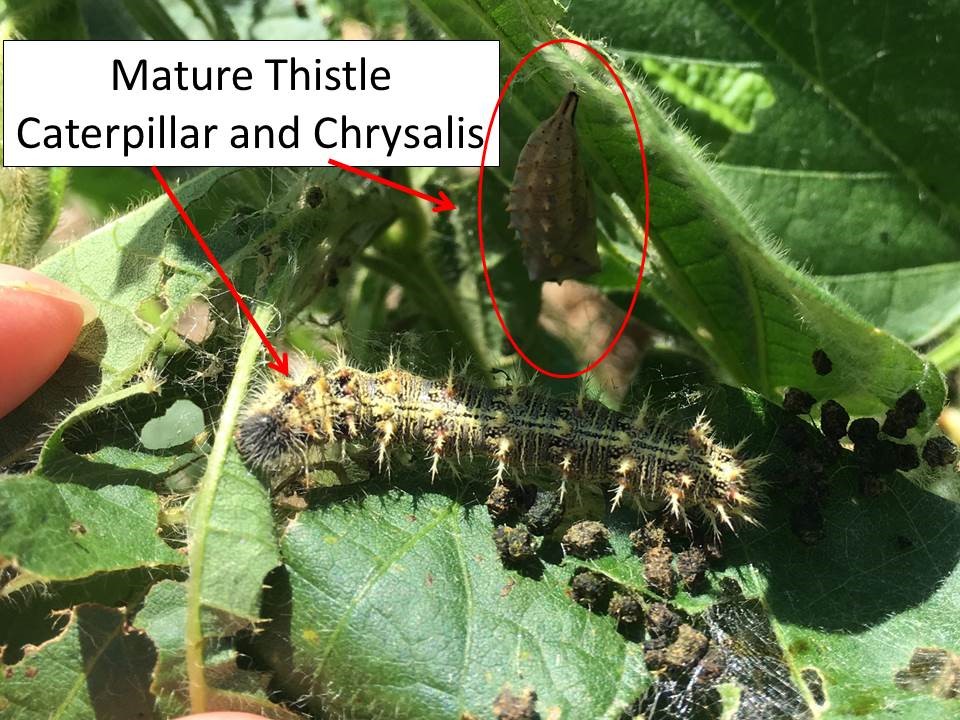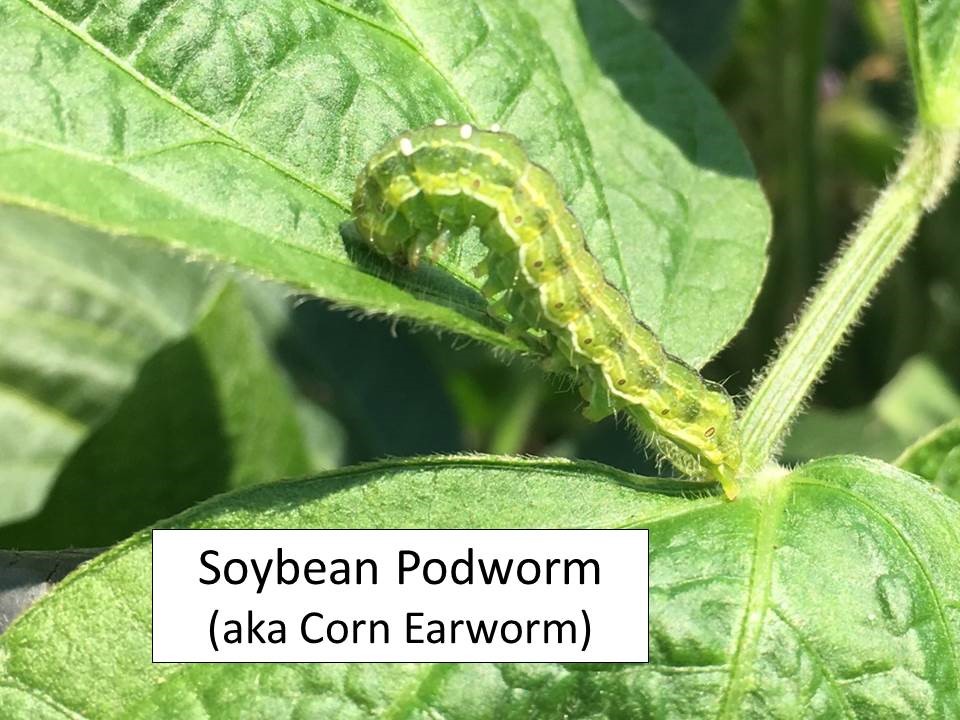–by Dr. Jeff Whitworth and Dr. Holly Schwarting
Thistle caterpillars have mostly vacated their webbed cells and are or have pupated. That is why there are huge numbers of painted lady butterflies flying around on most rural roads throughout north central Kansas. Hopefully, these butterflies will head south for overwintering and will not start laying eggs in soybean or sunflower fields. However, fields need to continue to be monitored for small thistle caterpillars, especially double-cropped soybeans. Additionally, monitor for the continued presence of green cloverworms, although these populations seem to be declining quite rapidly around north central Kansas.
Phytophagous stink bugs, both brown and green, are increasing in many soybean fields. Either may insert their mouthparts into the seed within the pods and suck out juice from the developing seed. However, there are also brown stink bugs that are predatory on pests like the yellowstriped armyworm (shown below) which has been killed and is being utilized as a food source by this beneficial stink bug.
Soybean aphid populations are still present in all fields examined this week in north central Kansas, but are not increasing in density or coverage.
For management decisions for all soybean pests please see the 2017 Soybean Insect Management Guide: https://www.bookstore.ksre.ksu.edu/pubs/MF743.pdf
